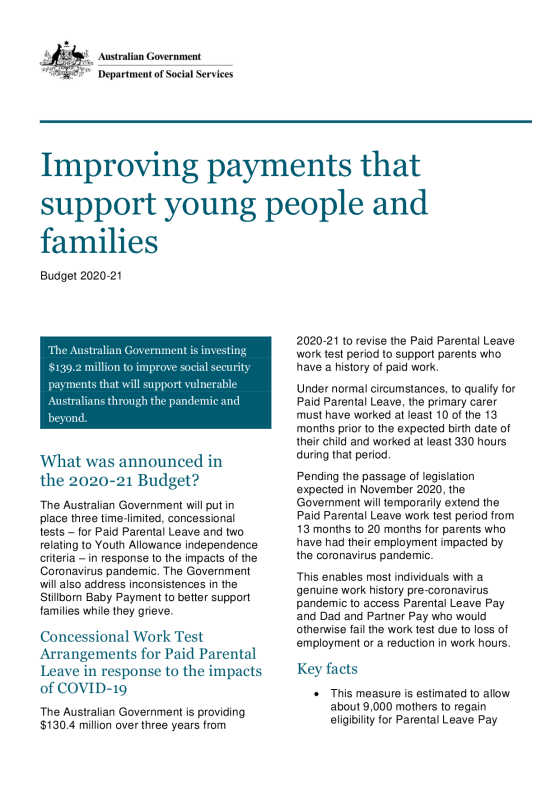Resource details
Date published: 26 Oct 2020
Having trouble accessing?
We take care to provide accessible resources. If you need help to access or a different format, you may like to:
Visit our accessibility page
Get in contact
DSS1651 | Permalink: www.dss.gov.au/node/1651
